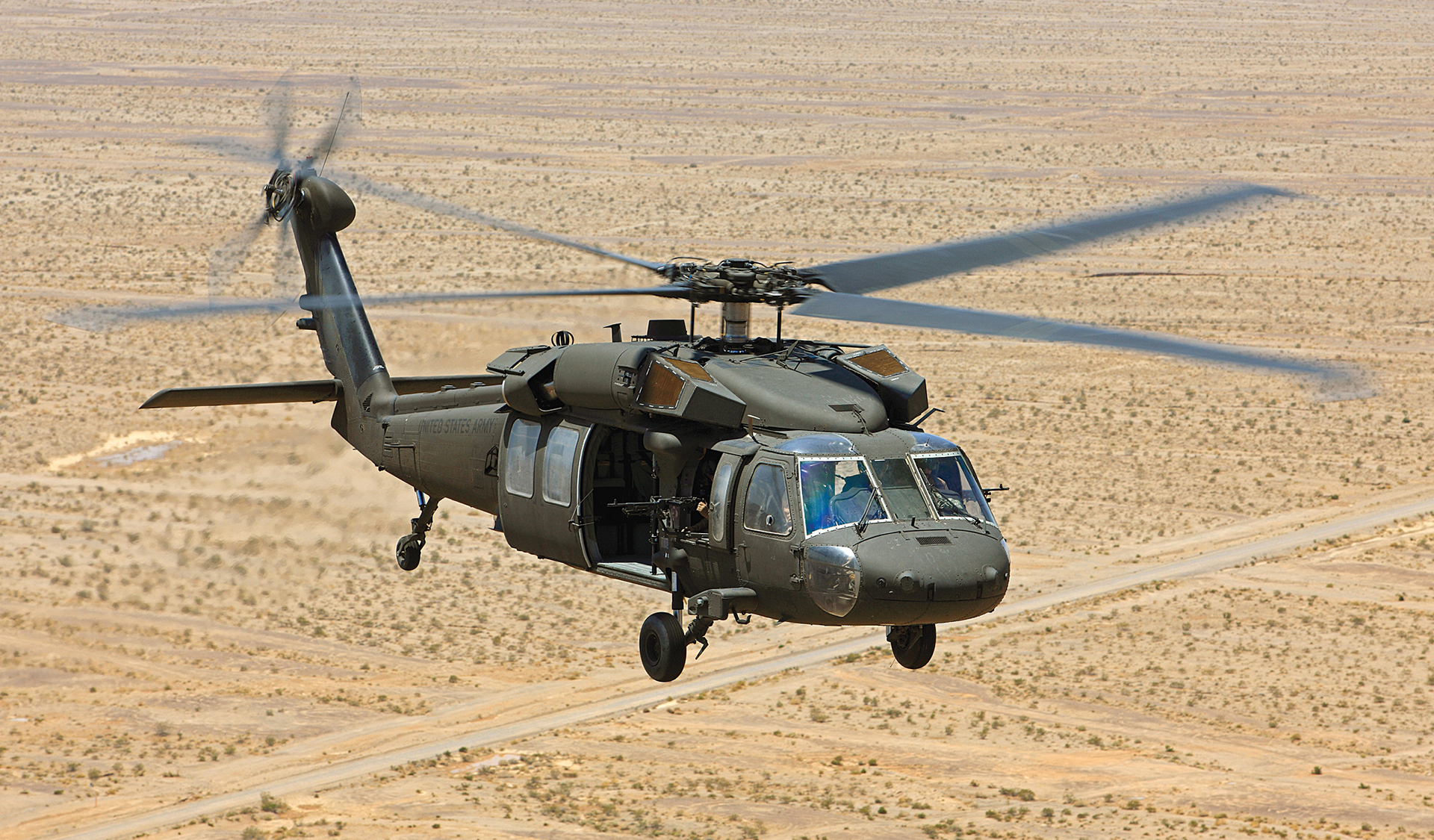Trip Ready: Making Certain Optimum Problem for Your UH 60 Helicopter
Trip Ready: Making Certain Optimum Problem for Your UH 60 Helicopter
Blog Article
Recognizing the Mechanics and Design Behind Uh 60 Helicopters
The UH-60 helicopter, generally recognized as the Black Hawk, stands as a pinnacle of contemporary rotorcraft technology, symbolizing a mix of durable design and complex technicians. From its creation to its present iterations, the evolution of this airplane showcases a combination of technology and practicality. As we peel off back the layers of the UH-60's design, a world of detailed systems and precise design comes to light. Understanding the mechanics and design behind this functional aircraft introduces a world where precision satisfies power, and where each component plays an important role in attaining trip.
History of UH-60 Helicopters
The history of UH-60 helicopters traces back to the late 1970s when the USA Military sought a sophisticated and versatile utility helicopter to change its aging fleet. In reaction to this demand, the Sikorsky Airplane Company developed the UH-60 Black Hawk helicopter. Introduced in 1979, the UH-60 promptly ended up being a staple in army procedures as a result of its excellent abilities.
The UH-60 was developed to succeed in a selection of objectives, consisting of army transport, medical evacuation, digital warfare, and special procedures. Its capability to adjust to various duties made it an important asset to the U.S. uh 60. Army and various other army pressures around the globe
Over the years, the UH-60 platform has undertaken several upgrades and variants to improve its efficiency and keep rate with progressing mission demands. These helicopters have seen considerable solution in disputes such as the Gulf Battle, Afghanistan, and Iraq, showcasing their dependability and convenience in diverse functional settings. The UH-60's rich background is a testament to its enduring heritage as a premier utility helicopter.

Engine and Power Systems
Utilizing cutting-edge propulsion technology, UH-60 helicopters are outfitted with innovative engine and power systems to make sure ideal performance and reliability in a variety of operational scenarios. The UH-60, commonly referred to as the Black Hawk, is powered by 2 General Electric T700-GE-701D engines, each efficient in delivering up to 1,940 shaft horsepower. These turboshaft engines supply the required thrust for the helicopter to perform its objectives successfully, including troop transport, medical discharge, and combat support.

Rotor System and Aerodynamics
How do the rotor system and aerodynamics of UH-60 helicopters contribute to their operational performance and trip capabilities? The rotor system of the UH-60 helicopter plays an important function in offering lift and propulsion. The UH-60 features a four-bladed, fully articulated rotor system that allows for high maneuverability and stability throughout trip. This style allows the helicopter to do Get More Info a wide variety of objectives, from transport and clinical emptying to combat procedures.
The rules of aerodynamics likewise play an essential role in the efficiency of UH-60 helicopters. The streamlined fuselage and blades blade layout lower drag, enabling the helicopter to achieve greater speeds and far better gas efficiency. The aerodynamic style of the UH-60 additionally adds to its capability to operate in varied environmental problems, including hot temperature levels and high altitudes.
Avionics and Trip Control Systems

In its intricate sychronisation with the blades system and the rules of aerodynamics of UH-60 helicopters, the avionics and flight control systems develop a crucial network of innovations forming the airplane's functional capacities. In the UH-60, these systems include digital display screens, interaction radios, GPS navigation, weather condition radar, and autopilot systems.
The trip control systems of the UH-60 are responsible for translating the pilot's inputs into the proper changes to the blades system, making certain stable flight and maneuverability. These systems are composed of hydraulic actuators, servos, and computer systems that interact to regulate the main and tail rotors, as well as other flight control surfaces. By exactly taking care of the helicopter's trip characteristics, these systems make it possible for pilots to execute a variety of objectives, from transport and search-and-rescue to fight operations, with precision and confidence.
Role and Applications in Aviation
Avionics systems in UH-60 helicopters incorporate a variety of digital systems that aid in navigating, interaction, tracking, and regulating different airplane functions. These systems include electronic displays, auto-pilot systems, communication radios, GPS navigation tools, and weather radar. Furthermore, these systems include safety functions such as auto-pilot modes, terrain understanding advising systems, and stability enhancement systems to improve the total safety and operational abilities of the UH-60 helicopters in numerous missions, consisting of troop transport, clinical discharge, search and rescue, and airborne firefighting.
Conclusion
In final thought, the UH-60 helicopter is a flexible airplane with a rich history and advanced engineering. Its engine and power systems, rotor system, the rules of aerodynamics, avionics, and flight control systems all interact to make it a reputable and effective equipment. The UH-60's role and applications in air travel are huge, varying from armed forces procedures to look and save goals. Its proceeded growth and use demonstrate its significance in the area of air travel (uh 60).
In its detailed coordination with the rotor system and aerodynamics of UH-60 helicopters, the avionics and trip article source control systems create a critical network of modern technologies forming the airplane's functional abilities.The flight control systems of the UH-60 are responsible for translating the pilot's inputs right into the proper modifications to the blades system, guaranteeing stable flight and ability to move. Avionics systems in UH-60 helicopters include an array of digital systems that aid in navigation, interaction, surveillance, and managing various aircraft features. Furthermore, these systems integrate safety attributes such find more as autopilot modes, terrain recognition alerting systems, and stability enhancement systems to improve the overall safety and security and functional capabilities of the UH-60 helicopters in numerous objectives, including army transport, clinical emptying, search and rescue, and aerial firefighting.
Its engine and power systems, blades system, aerodynamics, avionics, and trip control systems all work with each other to make it a efficient and trustworthy device.
Report this page